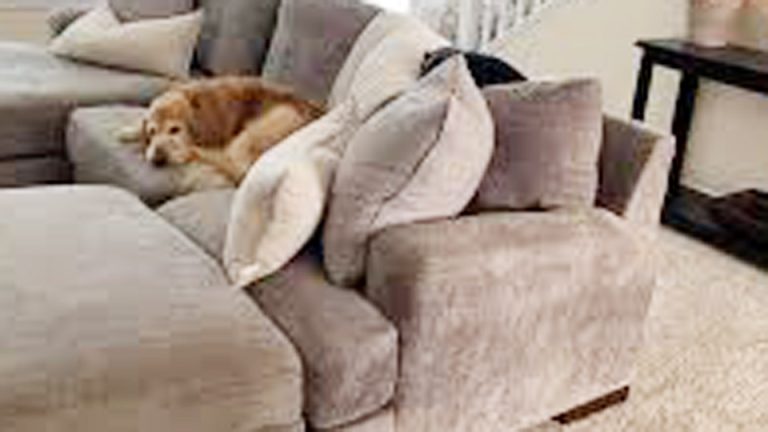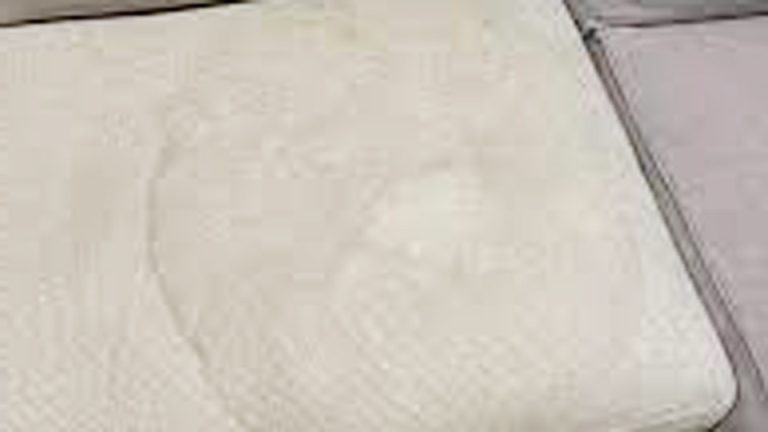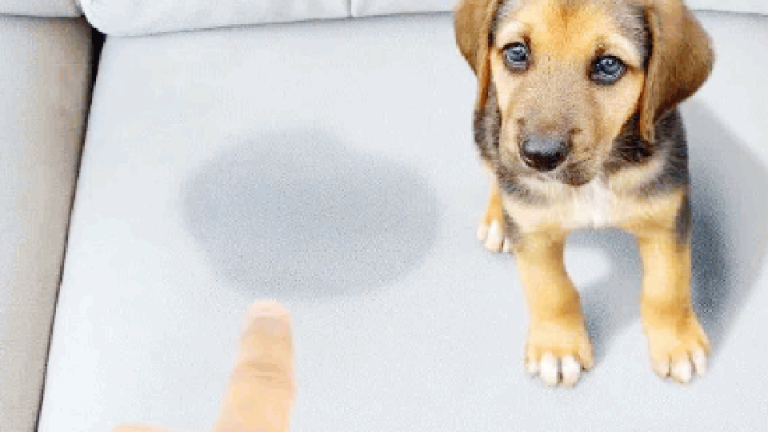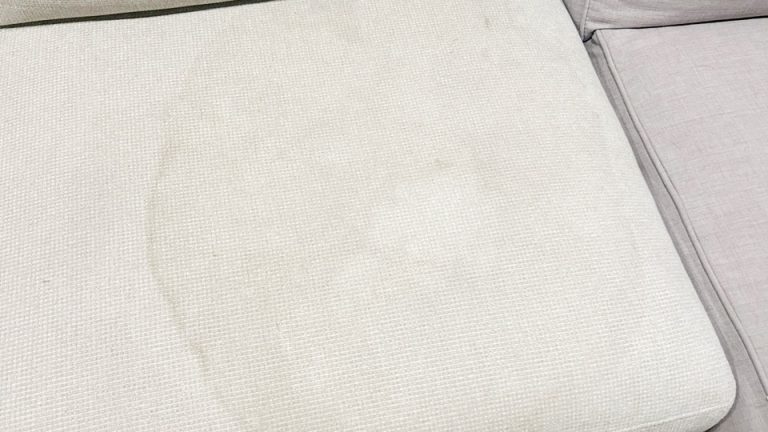I’ve had my fair share of battles with messes, especially from my rambunctious golden retriever, Max, who left his mark on my couch during his puppy days. Figuring out how to remove urine from furniture became a personal mission when I noticed lingering odors on my living room sofa, even after wiping it down.
I wanted solutions that were safe, effective, and gentle on my furniture’s delicate fabrics, all while being pet-friendly and non-toxic for my family. After years of experimenting with natural cleaners like baking soda and enzyme sprays, I’ve perfected a routine that banishes urine stains and smells.
I’ll share my step-by-step methods, personal tips, and real-life stories to help you tackle urine on furniture, whether you’re a busy mom or a professional keeping your home spotless.
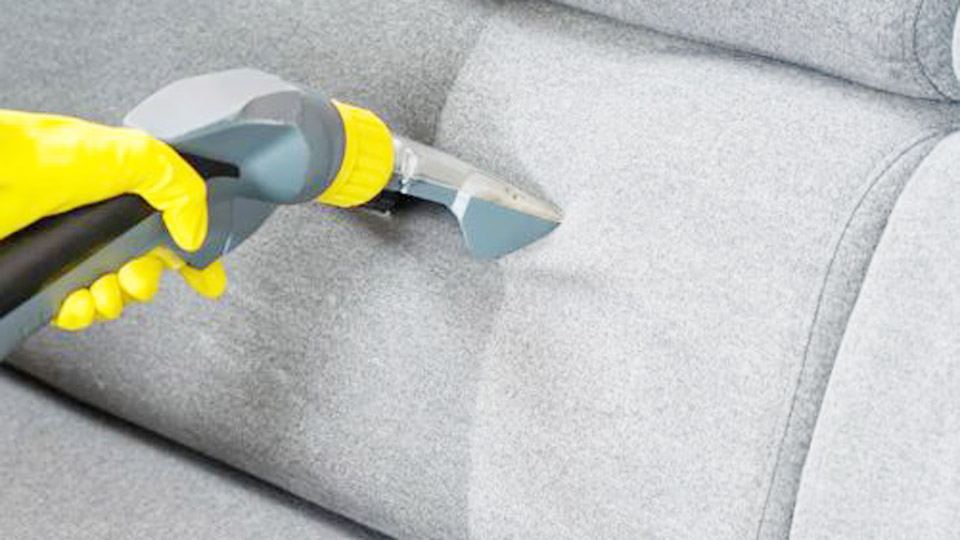
Image by brilliantpad
Why Urine on Furniture Is a Tough Challenge
Pet urine on furniture is more than just an eyesore—it can soak deep into fabrics, cushions, and even wood, leaving stains and stubborn odors. I learned this when Max had an accident on my velvet armchair, and the smell lingered despite my initial scrubbing attempts.
Upholstery is porous, absorbing liquids quickly, and urine’s proteins can create odors that attract pets back to the same spot.
Wood furniture, like my coffee table, is also tricky, as urine can damage finishes or seep into cracks. I needed cleaners that removed stains, neutralized odors, and were safe for both my furniture and Max. Natural solutions and enzyme cleaners became my lifesavers, and I’ll show you how they can work for you too.
Understanding Your Furniture’s Needs
Before diving into cleaning, let’s talk about furniture materials. I’ve cleaned everything from microfiber sofas to leather ottomans in my home, and each type requires a different approach. Fabric upholstery, like my couch, absorbs urine deeply, while leather is less porous but can be damaged by harsh cleaners.
Wood furniture needs gentle handling to avoid stripping finishes. I learned this when I used a too-strong cleaner on a wooden chair, leaving a dull spot.
Always check your furniture’s care label (often under cushions or on the frame) or test cleaners in a hidden area, like under a sofa, to avoid damage. Knowing your furniture’s material helps you choose the right cleaning method.
Gathering Your Cleaning Supplies
To remove urine from furniture, I use a mix of natural and specialized tools. I keep these in my cleaning caddy for quick access when Max strikes. Here’s what I use:
- Baking soda: Absorbs odors and lifts light stains.
- White vinegar: Breaks down urine and neutralizes smells.
- Enzyme-based pet cleaner: Digests urine proteins and odors.
- Liquid dish soap: Cuts through greasy residue.
- Warm water: Dilutes cleaners for safe application.
- Spray bottle: For even application of solutions.
- Soft-bristle brush or old toothbrush: For gentle scrubbing.
- Microfiber cloths or paper towels: For blotting and wiping.
- Dry towels: To absorb excess moisture.
- Fan or hairdryer (cool setting): To speed drying and prevent mold.
- Protective gloves: To keep hands clean and safe from bacteria.
- Black light (optional): To find hidden urine spots.
These items are affordable, pet-safe, and likely already in your home, making urine cleanup manageable.
Step-by-Step Guide to Cleaning Fresh Urine from Fabric Furniture
When Max was a puppy, fresh urine accidents were common on my microfiber sofa. This natural method using vinegar and baking soda saved the day. Here’s how I do it:
Blot the Urine Immediately
As soon as I spot a puddle, I grab paper towels or a microfiber cloth to blot up as much urine as possible. I press firmly to soak up liquid from the fabric, working from the outside in to avoid spreading. I learned to act fast after Max peed on my couch, and delaying let the urine sink deeper, making it harder to clean.
Mix a Vinegar Solution
In a spray bottle, I mix 1 cup white vinegar with 1 cup warm water to dilute the acidity and protect the fabric. I add a drop of liquid dish soap for extra cleaning power on greasy spots. I shake gently to combine. I test this solution in a hidden spot first, as I once faded a cushion by skipping this step.
Apply the Solution
I spritz the vinegar solution lightly onto the urine spot, ensuring it penetrates the fabric without soaking it. I let it sit for 10 minutes to break down urine and neutralize odors. For delicate fabrics, I dab the solution with a cloth to control moisture.
Sprinkle Baking Soda
I sprinkle 2-3 tablespoons of baking soda over the wet area, causing a fizzing reaction that lifts urine residue. I let it sit for 10-15 minutes to absorb odors. This step eliminated the smell of Max’s accident on my sofa, leaving it fresh.
Scrub Gently
Using a soft-bristle brush, I scrub the area in circular motions to lift stains. For delicate fabrics, I use a microfiber cloth to avoid fraying. I reapply the vinegar solution if needed for stubborn spots. This removed a fresh urine stain from my couch in minutes.
Wipe and Rinse
I wipe the area with a damp microfiber cloth to remove residue and baking soda. I rinse the cloth often to avoid spreading urine. I blot with plain water to remove any vinegar or soap, ensuring the fabric isn’t sticky.
Dry Thoroughly
I dry the area with a clean towel, pressing to absorb moisture. I use a fan or hairdryer on a cool setting to ensure the fabric is completely dry, preventing mold or mildew. This step saved my sofa from a musty smell after a damp cleanup.
Tackling Set-In Urine Stains on Fabric Furniture
For older, set-in stains, like the ones I found on a guest room chair after Max’s puppy phase, I use a baking soda paste. Here’s my method:
Make a Baking Soda Paste
In a small bowl, I mix 3 tablespoons baking soda with a splash of warm water to form a thick paste. I apply it to the stained area with a microfiber cloth and let it sit for 15-20 minutes. This paste lifted a yellowed urine stain from my chair’s upholstery.
Scrub Gently
Using a soft-bristle brush, I scrub the paste into the fabric in circular motions. For delicate fabrics, I use a cloth to avoid damage. I reapply paste for stubborn stains, like a dark spot I found under a cushion.
Rinse and Dry
I wipe the area with a damp cloth, then blot with plain water to remove residue. I dry thoroughly with a towel and fan to prevent moisture buildup. This method restored my chair to its original freshness.
Tips for Success
I use the paste sparingly on delicate fabrics and test first to avoid abrasion. I vacuum up loose baking soda to prevent it from clogging my cloth.
Cleaning Dog Urine from Leather Furniture
For leather furniture, like my ottoman, I use a different approach to avoid damaging the finish. Here’s how I handle it:
Blot the Urine
I blot the urine immediately with paper towels, being careful not to rub, as leather is sensitive. I press gently to absorb liquid from the surface.
Mix a Mild Solution
I mix a few drops of liquid dish soap with 1 cup warm water in a bowl. I avoid vinegar or baking soda on leather, as they can dry out or discolor it, as I learned when I dulled a leather cushion.
Wipe Gently
I dip a microfiber cloth in the solution, wring it out well, and wipe the urine spot gently. I work in small sections to avoid over-wetting. This removed a fresh urine spot from my ottoman without harm.
Dry and Condition
I dry the area with a clean towel, then apply a leather conditioner to restore moisture and prevent cracking. I use a fan to speed drying. This kept my ottoman soft and odor-free.
Using Enzyme Cleaners for Stubborn Urine Odors
For persistent odors, like on my couch where Max repeatedly marked, I turn to enzyme-based cleaners. Here’s my process:
Choose a Pet-Safe Enzyme Cleaner
I pick an enzyme cleaner designed for pet urine, ensuring it’s safe for my furniture’s material. I used one on my sofa, and the lingering smell vanished after one application.
Apply the Cleaner
I spray the enzyme cleaner generously on the stained area, ensuring it soaks into the fabric. I let it sit for 15-30 minutes, depending on the product’s instructions. For old stains, I cover with a damp cloth to keep it wet longer.
Wipe and Dry
I blot with a microfiber cloth, then wipe with plain water to remove residue. I dry thoroughly with a towel and fan. This method eliminated a stubborn odor on my couch, stopping Max from re-marking.
Why It Works
Enzyme cleaners digest urine proteins and odor-causing bacteria, preventing pets from returning to the spot. This was crucial for breaking Max’s habit.
Cleaning Urine from Wood Furniture
For wood furniture, like my coffee table, I use a gentle approach to protect the finish:
Blot Immediately
I blot the urine with paper towels to prevent it from seeping into cracks or damaging the finish. I act fast to avoid stains.
Mix a Mild Solution
I mix a drop of dish soap with 1 cup warm water. I avoid vinegar or baking soda, as they can strip wood finishes, like when I dulled a chair by mistake.
Wipe and Dry
I wipe the area with a damp cloth, then dry immediately with a towel. I use a wood polish to restore shine. This kept my coffee table spotless after a small accident.
Comparing Cleaning Methods for Urine on Furniture
I’ve tried various methods to remove urine from furniture, and each has its strengths. Here’s a table comparing my top approaches:
| Method | Ingredients/Tools | Pros | Cons | Best For |
|---|---|---|---|---|
| Vinegar & Baking Soda | Vinegar, baking soda, water, dish soap | Natural, affordable, neutralizes odors, lifts stains | Not for leather or wood, needs drying | Fabric furniture, fresh urine |
| Baking Soda Paste | Baking soda, water, cloth | Lifts set-in stains, deodorizes | Slightly abrasive, needs rinsing | Fabric furniture, old stains |
| Enzyme Cleaner | Pet-safe enzyme spray | Breaks down odors, prevents re-marking, fabric-safe | More expensive, may need multiple applications | Fabric furniture, stubborn odors |
| Dish Soap Solution | Dish soap, water, cloth | Gentle, safe for leather and wood | Less effective on deep odors | Leather, wood, fresh urine |
The vinegar and baking soda method is my go-to for fabric furniture, while enzyme cleaners are best for persistent odors.
Furniture-Specific Cleaning Tips
Different furniture types need tailored care. Here’s how I adjust my approach:
Fabric Upholstery
My microfiber sofa handles the vinegar and baking soda method well. I use enzyme cleaners for deep odors and dry thoroughly to prevent mold.
Leather Furniture
My leather ottoman needs mild dish soap and conditioning after cleaning. I avoid acidic cleaners to protect the finish.
Wood Furniture
My coffee table requires gentle soap and immediate drying to avoid water damage. I use polish to restore shine.
Delicate Fabrics
For velvet or silk, I use enzyme cleaners or mild soap, dabbing gently to avoid fraying, and test first to ensure safety.
Preventing Urine Stains on Furniture
Keeping furniture urine-free is easier with preventative habits. Here’s what I do:
Clean Up Immediately
I blot urine right away with paper towels to prevent it from soaking in. This saved my couch from a fresh accident.
Use Protective Covers
I use washable covers on my sofa during Max’s training phase. They’re easy to clean and protect upholstery.
Train Your Pet
I worked with Max on consistent potty training, rewarding him for going outside. This reduced accidents significantly.
Control Humidity
I use a dehumidifier in humid rooms to prevent mold, which can worsen urine odors, especially in fabric furniture.
Extra Cleaning Hacks I Love
Here are some tricks I’ve picked up to make cleaning easier:
- Black Light for Hidden Stains: I use a black light to find dried urine spots that glow, like on my couch where Max sneaked a pee.
- Baking Soda Overnight: I sprinkle baking soda on fabric furniture overnight to absorb odors, then vacuum it up.
- Enzyme Spray Maintenance: I spritz enzyme cleaner on high-risk areas weekly to prevent odor buildup.
You’re Ready to Keep Your Furniture Fresh!
Mastering how to remove urine from furniture has transformed my home, and I’m thrilled to share my methods with you. With natural solutions like vinegar and baking soda, plus enzyme cleaners for stubborn odors, you can keep your furniture clean and pet-friendly.
My step-by-step guide and tips make it easy to tackle messes, no matter how busy life gets. Your furniture deserves to be fresh and inviting, and you’ve got the tools to make it happen.
Frequently Asked Questions
Can I use vinegar on all furniture to remove urine?
Vinegar is great for fabric furniture but can damage leather or wood finishes. I use mild dish soap for those and test first on fabric.
How long does it take to clean urine from furniture?
For fresh urine, my vinegar and baking soda method takes about 30 minutes, including drying. Set-in stains may need 45 minutes with enzyme cleaners.
Will these cleaners remove urine odors completely?
Yes, my baking soda and enzyme cleaner methods eliminate odors. Enzyme cleaners are especially effective for deep smells that attract pets back.
What if the urine stain doesn’t come out after cleaning?
If stains persist, I reapply an enzyme cleaner and let it sit longer, up to 30 minutes. I also check for hidden spots with a black light.
Are these cleaners safe for homes with pets or kids?
Yes, my methods are pet-safe and non-toxic when rinsed properly. I dry thoroughly to avoid residue that pets or kids might touch.

